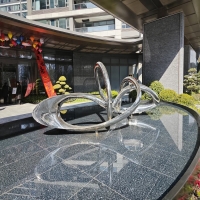Welcome to the website for landscape facilities products and knowledge.
What are the best practices for designing landscape tables to resist damage from skateboarding?
Designing landscape tables that can withstand skateboarding requires a combination of smart material choices, strategic shapes, and urban design principles. Here are the best practices to ensure durability and resistance to damage:
1. Material Selection: Opt for heavy, durable materials like reinforced concrete, cast iron, or powder-coated steel. These materials are less prone to scratches, dents, and grinding damage from skateboards.
2. Surface Design: Avoid smooth, flat surfaces that are ideal for skateboarding. Instead, incorporate textured or ribbed surfaces, or use materials like stone or rough composite that discourage grinding.
3. Shape and Structure: Design tables with irregular shapes, curved edges, or integrated seating that disrupts skateboard tricks. Avoid ledges or flat benches that can be used as ramps.
4. Fixed Installations: Secure tables firmly to the ground using deep-set foundations or bolts to prevent movement or tipping during skateboarding attempts.
5. Strategic Placement: Position tables in areas with limited open space or near obstacles like planters or bollards to deter skateboarders from using them.
By implementing these strategies, landscape architects and urban planners can create functional, long-lasting tables that resist skateboard damage while maintaining aesthetic appeal in public spaces.
Related search:

Recommendation
Abstract art sculpture, stainless steel metal sculpture, large-scale water feature sculpture